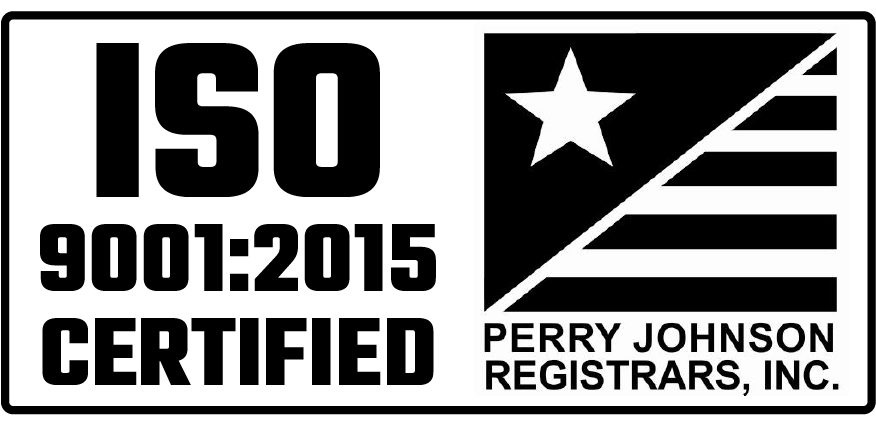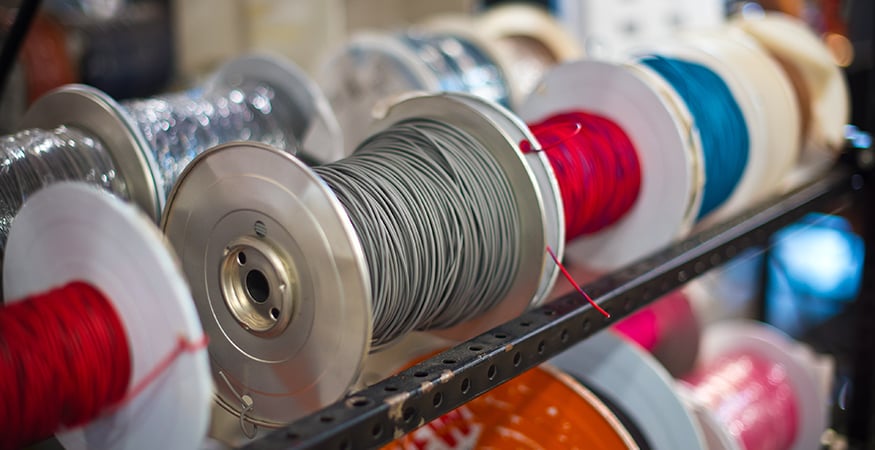Wire selection is a critical piece of electrical assembly design as it affects the safety, functionality, ease of use, and serviceability of the assembly. Because there are thousands of types of wire and electrical cable, choosing the right wire or wires can be complicated and daunting.
To clarify, I’m defining “wire” as a single, flexible conductor of electricity surrounded by insulation. Typically, the conductor material is copper; however, it can vary based on the application. Speaking of which, before you start designing anything, you’ll need to fully understand how the electrical assembly will be used. What will its job be and what type of environment will it be working in?
Once you’ve defined its end use, you can get to work answering the following five questions that will help you select the best electrical wire for your application.
1. What size wire do I need?
There are two pieces to the wire size question: thickness (gauge) and length. To determine what gauge wire you need, consider the carrying capacity and the amount of current the wire needs to conduct (measured in amperage or amps). Wire gauge is directly related to how many amps you need to run through it.
The distance you need the wire to go can also impact the gauge of wire you need. Because no conductor is perfect, the longer the wire, the more voltage you can lose through resistance/heat. You can counteract voltage drop by increasing the wire gauge which will, therefore, increase the amperage capacity. This allows you to pump more amps through to ensure the right amount of electricity is received, even if you lose a little along the way.
2. How flexible should the wire be?
Different types of wire offer different levels of wire flexibility:
- Solid core – almost no flexibility in lower gauge wire; becomes more flexible in higher gauges
- Coarsely-stranded wire – moderately flexible; it will keep the shape you give it
- Finely-stranded wire – highly flexible; won’t hold shape
3. What type of wire insulation is best?
The assembly’s working environment will dictate the type of insulation your wires need.
- Voltage – the higher the voltage level, the thicker the insulation needs to be to reduce the risk of shock
- Environmental considerations – exposure to the sun and UV, extreme temperatures, presence of chemicals or oils can impact performance
- Regulatory considerations – UL, SA, SAE, CE, etc.
- Abrasion resistance – higher vibration environments require thicker insulation
- Coating – some coatings can make it easier to print on the wire or push/pull them through conduit
4. Does wire color matter?
Using different colored wires within your electrical assembly can help you, the end user, and anyone who may need to service the assembly in the future, understand what the purpose of each wire is. Many companies use standardized wire colors to denote hot wires, ground wires, and neutral wires; some will even color code the different circuits within an electrical assembly.
5. Should I use copper vs. aluminum wire?
While copper is the most conductive metal, it can be heavy and expensive. So, for high voltage, long distance electrical applications, aluminum wire can be used. It’s an acceptable conductor that typically requires a thicker gauge, but it’s much lighter and less expensive than copper wire. For example, power lines use aluminum wire instead of copper.
Simplify the Wire Selection Process
The diverse specifications each industry has for the wires it uses create the need for all of the different types of wire available. But each of those industries typically sticks with a handful of wire types that meet their requirements, which can actually help simplify the wire selection process.
For example, the automotive industry uses mostly GXL wire, which is well-suited for the working environments typically found inside of a vehicle (temperature, abrasion, oils, etc.). On the other hand, MTW (machine tool wire) is commonly used in electrical control cabinets because it’s rated for a higher voltage and the insulation is suitable for the working environment.
If you’re in the process of selecting wires for your electrical assembly, there are probably a few other components you’ll need to choose, too. Use our Wire Harness Design Checklist to help ensure you’re checking all of the boxes. Click the button below to get your copy today.





